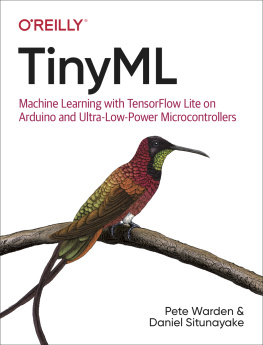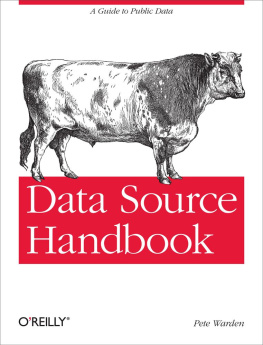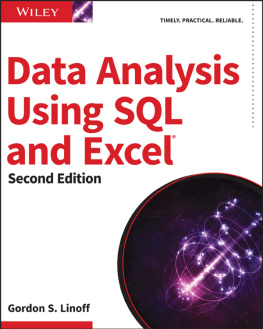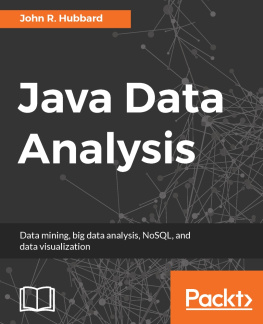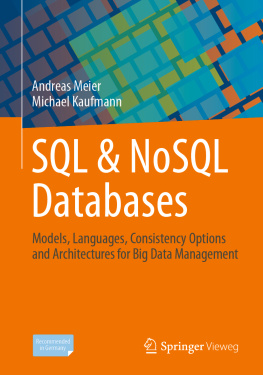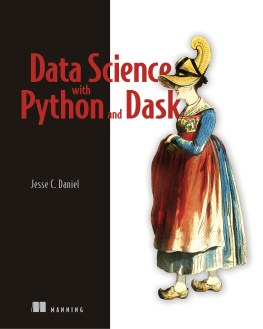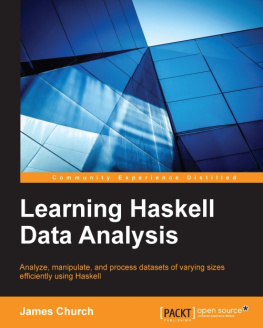Theres been a massive amount of innovation in data tools over the last few years, thanks to a few key trends:
Learning from the Web
Techniques originally developed by website developers coping with scaling issues are increasingly being applied to other domains.
CS+?=$$$
Google has proven that research techniques from computer science can be effective at solving problems and creating value in many real-world situations. Thats led to increased interest in cross-pollination and investment in academic research from commercial organizations.
Cheap hardware
Now that machines with a decent amount of processing power can be hired for just a few cents an hour, many more people can afford to do large-scale data processing. They cant afford the traditional high prices of professional data software, though, so theyve turned to open source alternatives.
These trends have led to a Cambrian explosion of new tools, which means that when youre planning a new data project, you have a lot to choose from. This guide aims to help you make those choices by describing each tool from the perspective of a developer looking to use it in an application. Wherever possible, this will be from my firsthand experiences or from those of colleagues who have used the systems in production environments. Ive made a deliberate choice to include my own opinions and impressions, so you should see this guide as a starting point for exploring the tools, not the final word. Ill do my best to explain what I like about each service, but your tastes and requirements may well be quite different.
Since the goal is to help experienced engineers navigate the new data landscape, this guide only covers tools that have been created or risen to prominence in the last few years. For example, Postgres is not covered because its been widely used for over a decade, but its Greenplum derivative is newer and less well-known, so it is included.
Conventions Used in This Book
The following typographical conventions are used in this book:
Italic
Indicates new terms, URLs, email addresses, filenames, and file extensions.
Constant widthUsed for program listings, as well as within paragraphs to refer to program elements such as variable or function names, databases, data types, environment variables, statements, and keywords.
Constant width boldShows commands or other text that should be typed literally by the user.
Constant width italicShows text that should be replaced with user-supplied values or by values determined by context.
Tip
This icon signifies a tip, suggestion, or general note.
Caution
This icon indicates a warning or caution.
Using Code Examples
This book is here to help you get your job done. In general, you may use the code in this book in your programs and documentation. You do not need to contact us for permission unless youre reproducing a significant portion of the code. For example, writing a program that uses several chunks of code from this book does not require permission. Selling or distributing a CD-ROM of examples from OReilly books does require permission. Answering a question by citing this book and quoting example code does not require permission. Incorporating a significant amount of example code from this book into your products documentation does require permission.
We appreciate, but do not require, attribution. An attribution usually includes the title, author, publisher, and ISBN. For example: Big Data Glossary by Pete Warden ( OReilly ). Copyright 2011 Pete Warden, 978-1-449-31459-0.
If you feel your use of code examples falls outside fair use or the permission given above, feel free to contact us at .
Safari Books Online
Note
Safari Books Online is an on-demand digital library that lets you easily search over 7,500 technology and creative reference books and videos to find the answers you need quickly.
With a subscription, you can read any page and watch any video from our library online. Read books on your cell phone and mobile devices. Access new titles before they are available for print, and get exclusive access to manuscripts in development and post feedback for the authors. Copy and paste code samples, organize your favorites, download chapters, bookmark key sections, create notes, print out pages, and benefit from tons of other time-saving features.
OReilly Media has uploaded this book to the Safari Books Online service. To have full digital access to this book and others on similar topics from OReilly and other publishers, sign up for free at http://my.safaribooksonline.com.
How to Contact Us
Please address comments and questions concerning this book to the publisher:
| OReilly Media, Inc. |
| 1005 Gravenstein Highway North |
| Sebastopol, CA 95472 |
| 800-998-9938 (in the United States or Canada) |
| 707-829-0515 (international or local) |
| 707-829-0104 (fax) |
We have a web page for this book, where we list errata, examples, and any additional information. You can access this page at:
| http://www.oreilly.com/catalog/9781449314590 |
To comment or ask technical questions about this book, send email to:
For more information about our books, courses, conferences, and news, see our website at http://www.oreilly.com.
Find us on Facebook: http://facebook.com/oreilly
Follow us on Twitter: http://twitter.com/oreillymedia
Watch us on YouTube: http://www.youtube.com/oreillymedia
Chapter 1. Terms
These new tools need some shorthand labels to describe their properties, and since theyre likely to be unfamiliar to traditional database users, Ill start off with a few definitions.
Document-Oriented
In a traditional relational database, the user begins by specifying a series of column types and names for a table. Information is then added as rows of values, with each of those named columns as a cell of each row. You cant have additional values that werent specified when you created the table, and every value must be present, even if its as a NULL value.
Document stores instead let you enter each record as a series of names with associated values, which you can picture being like a JavaScript object, a Python dictionary, or a Ruby hash. You dont specify ahead of time what names will be in each table using a schema. In theory, each record could contain a completely different set of named values, though in practice, the application layer often relies on an informal schema, with the client code expecting certain named values to be present.


